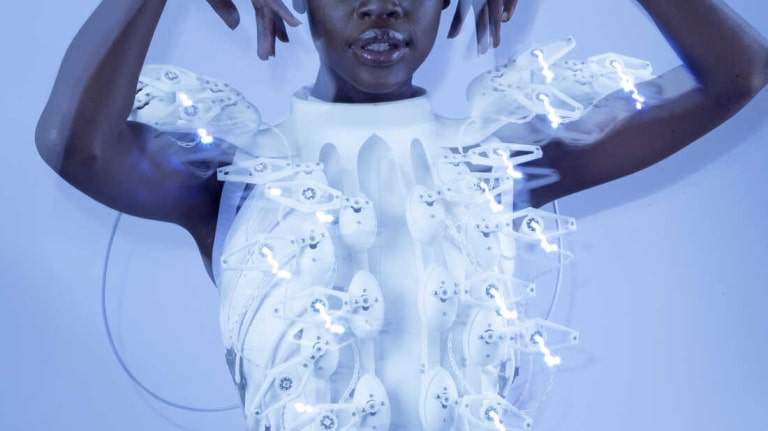Fashion technology and innovation in fashion,
Fashion and technology, two seemingly different worlds, are constantly converging and enriching each other.
Nowadays, we are witnessing a wonderful connection brought to us by innovations in fashion,
Such as smart textiles, 3D printing of clothing, and virtual fitting of clothing.
These technological advances are not only changing the way we buy and wear clothes;
It also has the potential to radically change the fashion industry and its impact on the environment.

Smart Textiles: Fashion just got smarter
Smart textiles, also called smart or e-textiles, are fabrics and clothing equipped with electronics and sensors.
These textiles can respond to different stimuli such as temperature, humidity, or even signals from your body.
One example of this is clothing with built-in sensors that can monitor the wearer’s health and fitness.
Smart clothing thus becomes not just a stylish accessory, but also a useful tool for monitoring and improving lifestyle.
3D printing of clothing: a completely new way of manufacturing
3D printing clothes means no longer needing fabric to make clothes, instead,
Special printers are available that can create a garment exactly to specifications.
This technology provides revolutionary possibilities in the field of individual tailoring and waste reduction.
So you can easily imagine one day having custom clothing printed that fits you perfectly
At the same time, it does not cause any unnecessary waste.

Fitting virtual clothes
Virtual fitting is a technology that allows customers to try on clothes in a digital environment, using augmented reality (AR) or virtual reality (VR).
You can see how clothes will look on you without having to actually try them on.
This not only saves time, but also reduces the number of visits to stores and thus the consumption of energy and resources.
Challenges and benefits for the fashion industry
These innovations in fashion present a number of challenges and benefits: on the one hand, they increase the possibilities for customization and reduce the environmental footprint of the fashion industry.
On the other hand, they can increase reliance on electronics and technical skills, which can create a digital divide between different strata of society.
The combination of fashion and technology opens new horizons for clothing creation and consumption.
Whereas smart textiles and 3D clothing printing
And virtual fittings are just some examples of how technology is being used to transform the fashion industry.
See More: SKP sunken shopping paradise with a botanical rooftop in the heart of the city









